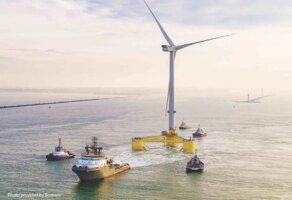“How come you say you will when you won’t
and how come you say you do when you don’t,
uh huh Honey don’t”
Carl Perkins (but I love the beatles version)
Controlling price is no way manage an economy
Point 1. Forcing prices below their natural level will have adverse consequences. This has been proved everywhere from Cuba to Venezeula. Perhaps predictably it’s an investment banker that wants to set arbitrary regulated prices (manipulate the market). It’s not worth going over the theory and practice of this.
The consequences and theory are as well know as those of climate change itself. Electricity is not a regulated monoply. Yet. And anyway look how well that regulated monopoly worked here in Australia.
Point 2. There will be some cost to decarbonize the global economy. There will be a far, far higher cost if we don’t.
The cost to decarbonize the electricity sector is a lot lower than it used to be and if we take AEMO’s word for it, as expressed in words but not numbers, the cost to decarbonize the electricity sector is lower than the cost of replacing the existing coal fired generation with new coal fired generation.
Think about it. The cost to decarbonise the electricity system is lower than the cost of replacing the existing power system like for like.
That is a gift. An unimaginable gift compared to forecasts only a few years ago. When AGL built the Hallet wind farms only a few years ago we were talking about prices of $100/MWh and now its pretty much half that. Yes there is a balancing cost as well.
None of this means that electricity prices will go back to the levels seen ten years ago. They probably won’t. But they probably never were going back to that level. China has built 100s of GWs of coal fired generation in the past ten years and wholesale power prices there are still around A$70/MWh.
They are going to be sorry they built all that coal generation as it’s going to make the replacement task harder and more expensive than it should have been and cost the Chinese economy $bns and $bns in keeping coal prices high.
Replacing the existing generation fleet in Australia was always going to lead to higher prices than those of ten years ago at least in the short term.
The issue we want to get to is what will the electricity price actually be? What are ITK’s actual price forecasts? We don’t answer that question in this note. But we might in another.
The second question, is a policy question. What is the relationship between the speed of decarbonization and the cost of decarbonizing?
Remember there are costs of not decarbonizing. Most of us think/estimate, without being able to prove it definitively that the costs of not decarbonizing are far greater than the decarbonization cost. Again the answer will have to wait. This note is more concerned with outlining a few facts and going over some very, very basic theory.
Prices are hard/impossible to forecast
Before diving into electricity lets look at a global commodity oil. Figure 1 is a 70 year chart, from 1946, deflated by the US CPI. Over the 70 years in real terms the price has tripled.
Australians, like most of the world’s population, happily pay taxes to consume oil, when you work it through, for the average family in Australia petrol taxes probably exceed a $30/t carbon tax. However, I digress.
The point of this chart is that the oil price has ranged from $20/b to $160/b. It can stay constant for 30 years and then become volatile. On average oil prices are more likely to be higher in the future than in the past.
What doesn’t show on the chart is that costs of producing oil go up and down with the price, incredible as that sounds.
The basic message is that if you could reliably forecast the oil price you’d make a killing, but in general people can’t and don’t accurately forecast the price. So my main message is to beware of price forecasts. Don’t ignore them, but don’t rely on them.
The second message is that prices are dynamic. High prices drive new supply and substitution and probably lead to rising costs and vice versa. So to a large extent in a globally competitive market the price will tend to be self correcting and will tend towards “the correct price = equilibrium”.
Also prices overshoot equilibrium regularly. But its self correcting. Sometimes producers get hurt sometimes consumers. Bad luck. Take care. Guess what, your happy life is not guaranteed.
Turning to electricity – cross sectional, time series and cost data
Over many years the electricity market has seen numerous technology changes driving prices.
An obvious historic example was oil fired generation to coal. Another shift was the move using transmission from small generators to large generation units. Coal fired generation has proved to be reliable, but so has renewable energy.
Denmark has just about the highest renewable share and the most reliable supply in Europe.
California 30% renewable average price US$32 MWh
However we think there is as much/more to be learned from Donald “duck” Trump’s USA or at least two big parts of it as there is from Europe. California’s renewable standard is 33% in 2020 and 50% in 2030. Its expected to beat those targets and in fact was at 29% in 2017 excluding behind the meter and 32% including.

And here’s how the price looks so far this year. US$32 MWh.

So yes California has cheap gas, although it doesn’t run so much as well as some large hydro, 9% nuclear and some imports. Even so A$40 MWh to A$45 MWh not so shabby. Total electricity consumption is about 50% higher than in the NEM on a population of 39 m.
Texas, the land of gas and oil? 20% wind, US$32/MWh
Texas electricity by fuel 2018 YTD is shown below

Wind with a touch of solar is around 20% of the Texas power mix:
The electricity price? Well that averages a whole US$32 in 2018 YTD. Because the wind patterns in Tx are different to many parts of the USA the daily peak price seems to happen mid afternoon. This might seem to be a solar or battery arbitrage opportunity but I have enough to do in Australia.

By contrast if we look at Australia, the wind & PV share is 1/3 California and just over half that of Texas.
The average pool price in Australia was about A$80, say US$60/MWh. We can summarise as follows:

If you looked at this table alone you might think that gas prices was the main factor explaining price differentials and not renewable share. And that’s partly true but in my view its not the main thing.
The main thing is that prices in Australia are high because supply has been lagging demand. Prices can be expected to be around LRMC for most of the next decade.
Price setting. A quick revisit to high school micro economics
Investment banking analysts make price forecasts all the time. They still follow the process outlined by Alfred Marshall back in 1890. If you pick a commodity like say iron ore the analyst will forecast near term prices based on current market conditions and then will generally assume demand will grow over time.
This means a long term price forecast that is set at long run marginal cost of production [LRMC]. LRMC is the product price to justify new investment. In electricity for some reason its called LCOE [levelized cost of electricity]. Basically it’s the capital cost and the present value of lifetime fuel costs.
In the long run theory says that demand and supply for the commodity in question will intersect at a price just below the new entrant price.
If demand is not high enough to justify new investment then the lower bound of price is generally set by short run marginal cost [SRMC] the cost in this case of mining an additional ton of iron ore. Below that price the producer will lose cash and would prefer not to produce.
If demand keeps falling producers lose cash and stop producing. Eventually a level is found.
In equilibrium the price is between SRMC and LRMC. If demand is less than the SRMC of the highest SRMC current producer then that producer will close. In practice the closure is often caused by a capex requirement.
If new technology enters the market with LRMC less than the SRMC of the highest existing producer then that high SRMC producer will be forced out of the market.
At the risk of some embarrassment I’ve tried to set these concepts out in a micro economics diagram. If lack of drafting skill is the only problem with the diagram I’ll be happy.

LRMC is the right concept to use for the 2022-2030 period in Ausrtralia – but it’s system LRMC not producer LRMC
The current market is one where new investment is going to be needed. There are two basic reasons. (1) The electricity sector and the economy have to decarbonize. The existing supply cannot reduce its carbon emissions so over time it has to be replaced.
(2) On top of that there is wide agreement that the existing coal generation fleet is getting to the end of its life. Much of the fleet will get to 50 years old over the next 15 years and global statistics are that few coal plants older than 50 years are in operation. We’d add that the existing coal mines are getting old as well.
(3) A third factor is reliability. There are only 8 coal stations in the combined NSW/Vic/SA region supplying the vast bulk of power and energy. Additional supply is prudent to reduce risk.
This means in terms of the above discussion that we expect the electricity price to settle at LRMC of new generation. It won’t matter what any ACCC or other Government body says the price should be. To get the investment price will have to be at LRMC.
The question therefore is what is that LRMC? That’s the topic of the next article.












